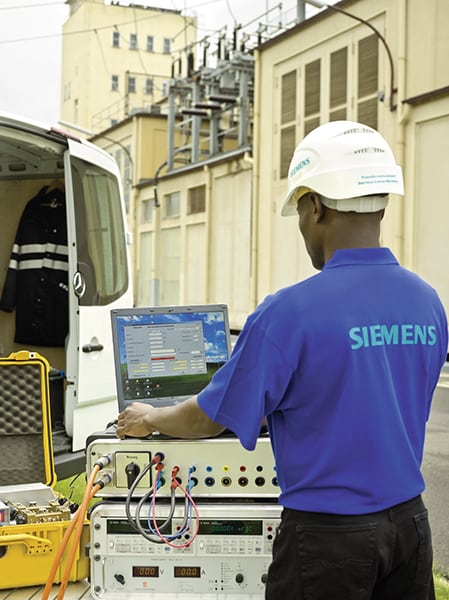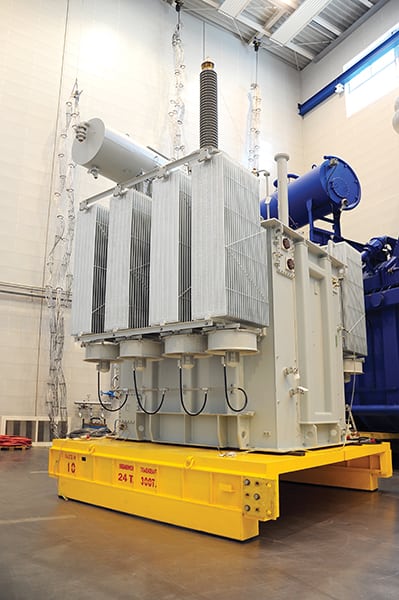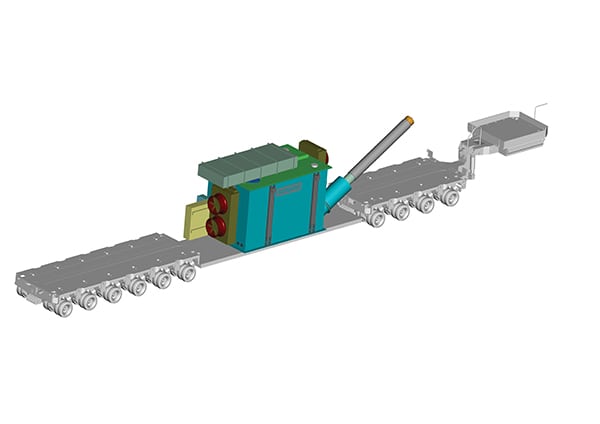Grid Resiliency: A Strategy for Keeping Transformers Safe
Grid resiliency has become a widely discussed topic recently. Experts have been called before congressional hearings to testify on the topic, and close calls—including a massive solar storm that missed Earth by a matter of days in 2012—have been highlighted in the news. Natural disasters, such as Hurricane Sandy, and physical attacks, such as the rifle assault on the Metcalf substation near San Jose, Calif., have also brought to light grid vulnerabilities.
Mitigating Risk Is Important
Most people are not prepared for a blackout that lasts longer than a day or two, but utilities must consider this possibility and prepare for it. A report published by the Electric Power Research Institute for the U.S. Department of Homeland Security states that power transformers are critical devices when it comes to natural disasters, attacks, or unintentional accidents. The findings are troubling once a person realizes that 70% of the grid’s transmission lines and large transformers are more than 25 years old, with the average age of power transformers in the U.S. being 40 years. Old age can lead to an increase of weather-induced outages and adds to failure risk during normal operation.
The transformer purchasing process is not simply a case of taking a product off of a shelf. Transformers are highly individualized, tailor-made products that are designed and manufactured for very unique purposes at strategic nodes in the transmission grid. The procurement process adds complexity to the manufacturing task, which is still mostly done by hand, using raw materials sourced from all over the world. The end product is in some ways a masterpiece of electrical equipment.
Units are very large and heavy—made mainly of steel and copper—so shipping them is another undertaking that cannot be done in the blink of an eye. Less than one-third of units larger than 60 MVA are made in the U.S. As such, U.S. reliance on imports makes quick delivery difficult, especially when it comes to extra-high-voltage power transformers (voltage levels above 345 kV).
A Three-Pronged Strategy
Siemens has developed a transformer strategy that encompasses several facets of transformer technology and also contains completely new features and products designed to secure resiliency for U.S. utilities. Preventive and protective measures can be taken to lower the risk of operational equipment failures and failures caused by natural disasters or human attacks.
Prevent. Preventive measures comprise all kinds of service to the existing transformer equipment. Condition assessment (Figure 1) helps keep track of the status of every single unit operated in the transformer fleet. As with most processes in the modern world, the preventive resiliency strategy is based upon an intelligent database that sums up information on the transformers in the fleet.
 |
|
1. Locating vulnerabilities. Comprehensive condition assessment and other services help to prevent unpredicted failures. Courtesy: Siemens Energy Management |
Siemens combines data from several measurements such as oil analysis, thermal graphics, and electrical tests to form a complete picture of all associated units. The transformer operator is able to view a simple traffic-light graphic to identify which transformers are likely to fail or need service. Retrofit and repair might give some units longer life with decreased operational risk.
Protect. While prevention is a common strategy to handle operational risks, protecting devices that require investment is a second method. Protective measures can be added to all new units that are ordered, and some can also be installed to upgrade existing units.
To shield units from human attacks, Siemens has completed testing with different kinds of rifles to find a material that prevents external harm to the transformer from bullets. The outcome is a cutting-edge solution with special armor panels, similar to tank-mounted sound panels, installed externally at the tank. Siemens has successfully tested bullet-resistant materials up to.50-caliber M2 ballistics.
To protect transformers from natural effects, such as geomagnetically induced current (GIC) from solar storms (Figure 2), Siemens offers GIC-safe units (Figure 3). Powerful solar storms are estimated to hit Earth approximately every 100 years. The best known and most famous such storm was the Carrington Event, which shocked telegraph operators and set some of their offices on fire in 1859. The insurance company Lloyds has estimated that such a storm could cause permanent damage to key transformers and widespread blackouts of 16 days to two years, affecting up to 40 million people.
 |
|
3. A safe alternative. Geomagnetically induced current (GIC) can destroy transformers, but a GIC-safe unit like the one shown here is designed to avoid damage. Courtesy: Siemens Energy Management |
In the case of solar storms, GIC flows from grounded transformer neutrals through the high-voltage windings into the transmission lines with some effect on the transformer. Siemens’ intelligent models calculate critical heating in advance so it can be avoided. GIC-safe units are manufactured for up to 200 amp extra DC capability. The use of nonmagnetic steel inserts in the tank base and clampings reduces high saturation levels at extreme DC levels, lowers eddy current losses, and prevents overheating due to lower specific losses. By addressing GIC effects on power transformers in this way, the grave danger from outer space is less of a threat.
React. Reactive measures cannot prevent a blackout, but they give power utilities an ace up their sleeve in the case of an emergency. Siemens’ solution for fast reaction is a mobile resiliency unit based upon a plug-and-play-concept. The main characteristics of this power transformer type are its mobility and compactness.
It is a spare unit that utilities can keep in reserve and transport to a location where it is needed within a very short timeframe. The dimensions and weight allow for transportation on a regular truck instead of transporting it as an abnormal load. Unlike installing normal replacement transformers—which can require a long time and highly trained staff—mobile resiliency units (Figure 4) are equipped with plug-in connectors, bushings, and cables. Typically, the utility’s staff can do this work easily and quickly thanks to the plug-in components.
 |
|
4. Rapid response. Utilizing a plug-and-play concept, mobile resiliency transformers allow operators to recover quickly during emergencies. Courtesy: Siemens Energy Management |
Analysis needs to be done beforehand on which locations and which duties the mobile resiliency unit will serve. Instead of investing in one spare unit per substation, it is possible to get a versatile unit that covers different ratings.
Siemens has already developed such a solution in cooperation with two different U.S. utilities. One of them allows reconnection between the 335/136 kV system (300 MVA) and the 132/68 kV system (150 MVA) with no oil handling. This solution is filled with ester instead of mineral oil and can be transported with oil in the tank, whereas the other solution relies on partial removal of mineral oil from the tank for an even lighter transport weight.
Mobile resiliency units following a plug-and-play-concept are a big step toward grid resiliency; however, they can never be a standardized product. Just like regular power transformers, they need to fit the operator’s needs and connections. Siemens’ ability to design, manufacture, transport, and install power transformers as well as perform service and monitor equipment operation leads to mobile resiliency units that are tailor-made for operators, giving them a chance to react rapidly in case of an emergency. It typically can take more than a week to restore the grid to a normal lineup utilizing conventional units, but these transformers are designed to be moved, installed, and energized in less than 36 hours.
—Richard Boyd is vice president, transformers for Siemens USA.
